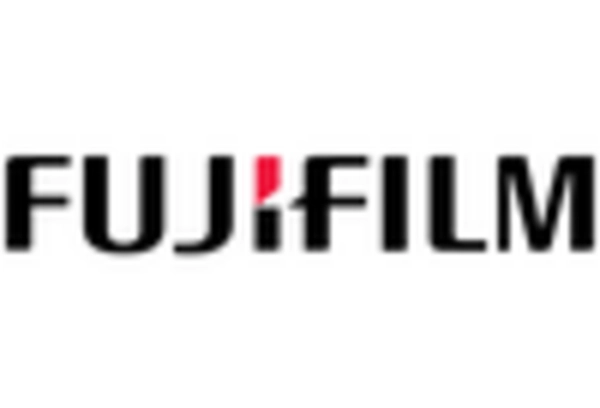Diverse Application Range
The diverse application range of cellulose films is a significant driver for the Cellulose Film Market. These films are utilized across various sectors, including food packaging, personal care products, and medical applications. In the food industry, cellulose films are favored for their ability to preserve freshness and extend shelf life, which is increasingly important in a market that values quality and safety. Additionally, the rise in demand for flexible packaging solutions has led to an increase in the use of cellulose films, as they offer versatility and adaptability. Market data suggests that the food packaging segment alone accounts for a substantial share of the cellulose film market, with expectations for continued growth as consumer preferences shift towards healthier and more sustainable options. This broad applicability is likely to sustain the momentum of the Cellulose Film Market in the coming years.
Technological Advancements
Technological advancements play a crucial role in shaping the Cellulose Film Market. Innovations in production techniques, such as improved extrusion and coating processes, have enhanced the quality and functionality of cellulose films. These advancements enable manufacturers to produce films with superior barrier properties, moisture resistance, and mechanical strength. Furthermore, the integration of nanotechnology and biopolymer blends is expanding the potential applications of cellulose films in various sectors, including food packaging, pharmaceuticals, and textiles. As a result, the market is witnessing a surge in demand for high-performance cellulose films that can meet the specific needs of diverse industries. The ongoing research and development efforts are expected to drive further growth in the Cellulose Film Market, as companies strive to stay competitive and meet evolving consumer demands.
Sustainable Packaging Demand
The increasing emphasis on sustainability is a primary driver for the Cellulose Film Market. As consumers become more environmentally conscious, there is a growing demand for biodegradable and compostable packaging solutions. Cellulose films, derived from natural sources, align with these sustainability goals, offering an eco-friendly alternative to traditional plastic films. In recent years, the market for sustainable packaging has expanded significantly, with projections indicating a compound annual growth rate of over 10 percent. This trend is likely to continue, as businesses seek to enhance their brand image and meet regulatory requirements regarding environmental impact. Consequently, the Cellulose Film Market is poised to benefit from this shift towards sustainable practices, as manufacturers innovate to create products that meet consumer expectations for both performance and environmental responsibility.
Consumer Preference for Natural Products
Consumer preference for natural products is a driving force in the Cellulose Film Market. As awareness of health and environmental issues increases, consumers are gravitating towards products made from natural and renewable resources. Cellulose films, being derived from wood pulp and other plant materials, resonate with this trend, appealing to consumers who prioritize sustainability and health. Market Research Future indicates that products featuring cellulose films are often perceived as safer and more environmentally friendly compared to synthetic alternatives. This shift in consumer behavior is prompting manufacturers to innovate and expand their product lines to include cellulose-based options. As the demand for natural and organic products continues to grow, the Cellulose Film Market is likely to experience a corresponding increase in market share, driven by the alignment of product offerings with consumer values.
Regulatory Support for Biodegradable Materials
Regulatory support for biodegradable materials is emerging as a key driver for the Cellulose Film Market. Governments and regulatory bodies are increasingly implementing policies aimed at reducing plastic waste and promoting the use of sustainable materials. This regulatory landscape encourages manufacturers to invest in cellulose film production, as it aligns with legislative goals to minimize environmental impact. For instance, several regions have introduced bans on single-use plastics, creating a favorable environment for cellulose films, which are biodegradable and compostable. As these regulations become more stringent, the demand for cellulose films is expected to rise, providing a significant opportunity for growth within the Cellulose Film Market. Companies that adapt to these regulatory changes are likely to gain a competitive edge, positioning themselves as leaders in the sustainable packaging sector.

















Leave a Comment